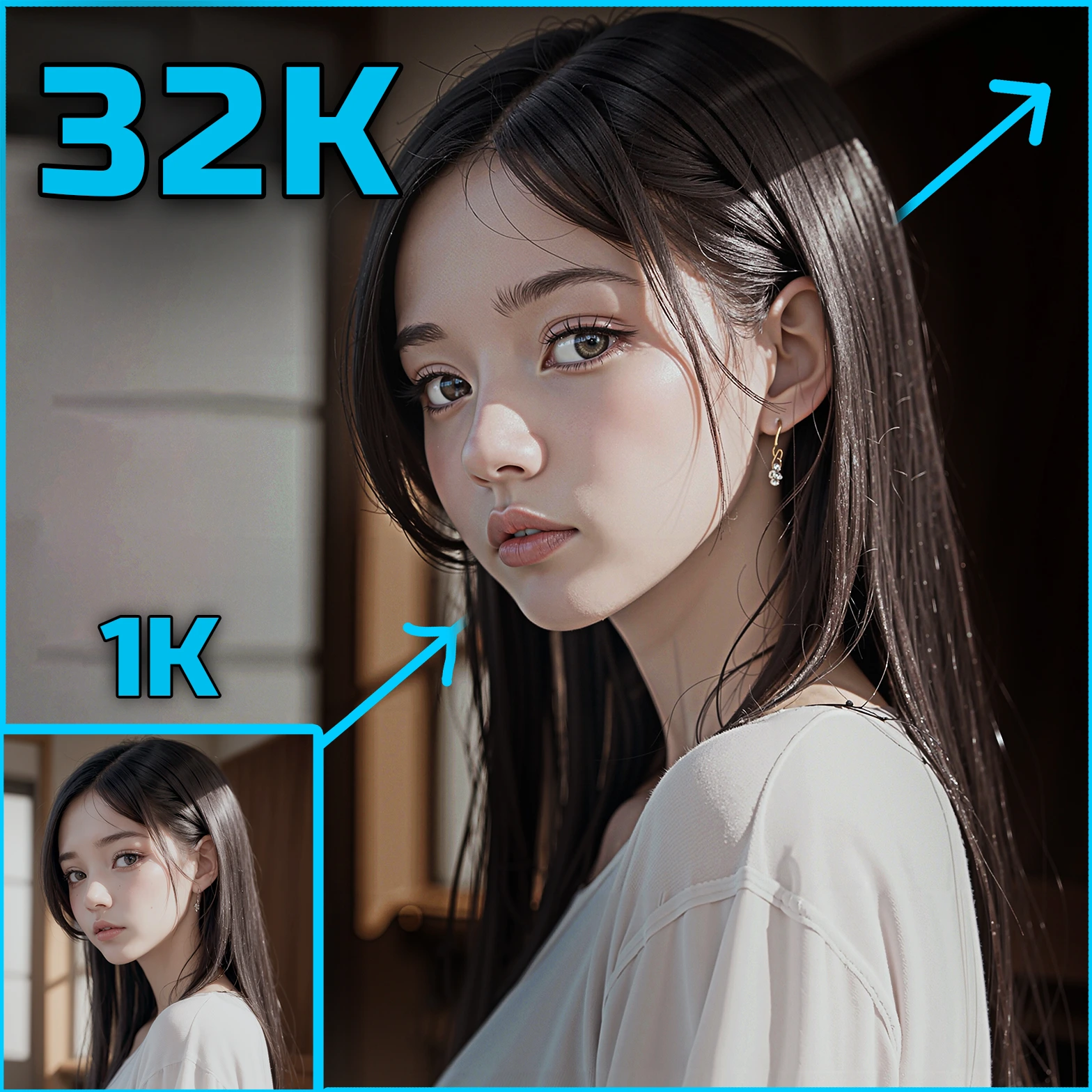ComfyUI Node: APISR Upscale
APISR_upscale
CategoryAPISR-KJ
kijai (Account age: 2467days) Extension
ComfyUI-APISR Latest Updated
2024-05-21 Github Stars
0.06K
How to Install ComfyUI-APISR
Install this extension via the ComfyUI Manager by searching for ComfyUI-APISR- 1. Click the Manager button in the main menu
- 2. Select Custom Nodes Manager button
- 3. Enter ComfyUI-APISR in the search bar
Visit ComfyUI Online for ready-to-use ComfyUI environment
- Free trial available
- 16GB VRAM to 80GB VRAM GPU machines
- 400+ preloaded models/nodes
- Freedom to upload custom models/nodes
- 200+ ready-to-run workflows
- 100% private workspace with up to 200GB storage
- Dedicated Support
APISR Upscale Description
Enhance image resolution with advanced super-resolution techniques for AI artists, offering versatile image enhancement solutions.
APISR Upscale:
The APISR_upscale node is designed to enhance the resolution of images using advanced super-resolution techniques. This node leverages different upsampling methods to cater to various super-resolution needs, such as classical super-resolution (SR), lightweight SR, and real-world SR with minimal artifacts. By utilizing sophisticated convolutional layers and upsampling strategies, the APISR_upscale node can significantly improve image quality, making it an essential tool for AI artists looking to upscale their images while maintaining or enhancing visual fidelity. The node is versatile and can handle different types of image enhancement tasks, including denoising and artifact reduction, providing a comprehensive solution for image quality improvement.
APISR Upscale Input Parameters:
ckpt_name
This parameter specifies the name of the checkpoint file to be used for the upscaling process. The checkpoint file contains pre-trained model weights that are essential for the super-resolution task. Using the correct checkpoint ensures that the model performs optimally, leveraging learned features from extensive training. There are no specific minimum or maximum values, but it is crucial to provide a valid checkpoint name that corresponds to the desired upscaling method.
dtype
This parameter defines the data type to be used during the upscaling process. It ensures that the computations are performed with the appropriate precision, which can impact both the performance and the quality of the output image. Common data types include float32 and float64, with float32 being a typical default for balancing performance and precision.
images
This parameter is the input image or batch of images that you want to upscale. The images should be provided in a format that the node can process, typically as tensors or arrays. The quality and resolution of the input images can affect the final output, so higher-quality inputs generally yield better results.
per_batch
This parameter determines the number of images to be processed per batch during the upscaling operation. It helps manage memory usage and computational load, especially when dealing with large datasets or high-resolution images. Adjusting this parameter can optimize the performance based on the available hardware resources.
APISR Upscale Output Parameters:
upscaled_images
The primary output of the APISR_upscale node is the upscaled images. These images have higher resolution and improved quality compared to the input images. The upscaling process enhances details and reduces artifacts, making the output suitable for various applications, including printing, digital art, and high-definition displays.
APISR Upscale Usage Tips:
- To achieve the best results, ensure that the input images are of good quality and free from significant noise or artifacts.
- Experiment with different
ckpt_namevalues to find the most suitable pre-trained model for your specific upscaling needs. - Adjust the
per_batchparameter based on your system's memory capacity to avoid out-of-memory errors during processing. - Use the
dtypeparameter to balance between performance and precision, withfloat32being a good starting point for most applications.
APISR Upscale Common Errors and Solutions:
Invalid checkpoint name
- Explanation: The provided
ckpt_namedoes not correspond to a valid checkpoint file. - Solution: Ensure that the checkpoint name is correct and that the file exists in the specified directory.
Unsupported data type
- Explanation: The
dtypeparameter is set to an unsupported data type. - Solution: Use supported data types such as
float32orfloat64.
Out of memory
- Explanation: The
per_batchparameter is set too high, causing memory overflow during processing. - Solution: Reduce the
per_batchvalue to fit within your system's memory capacity.
Input image format error
- Explanation: The input images are not in a format that the node can process.
- Solution: Ensure that the input images are provided as tensors or arrays in a compatible format.
APISR Upscale Related Nodes
RunComfy is the premier ComfyUI platform, offering ComfyUI online environment and services, along with ComfyUI workflows featuring stunning visuals. RunComfy also provides AI Playground, enabling artists to harness the latest AI tools to create incredible art.


